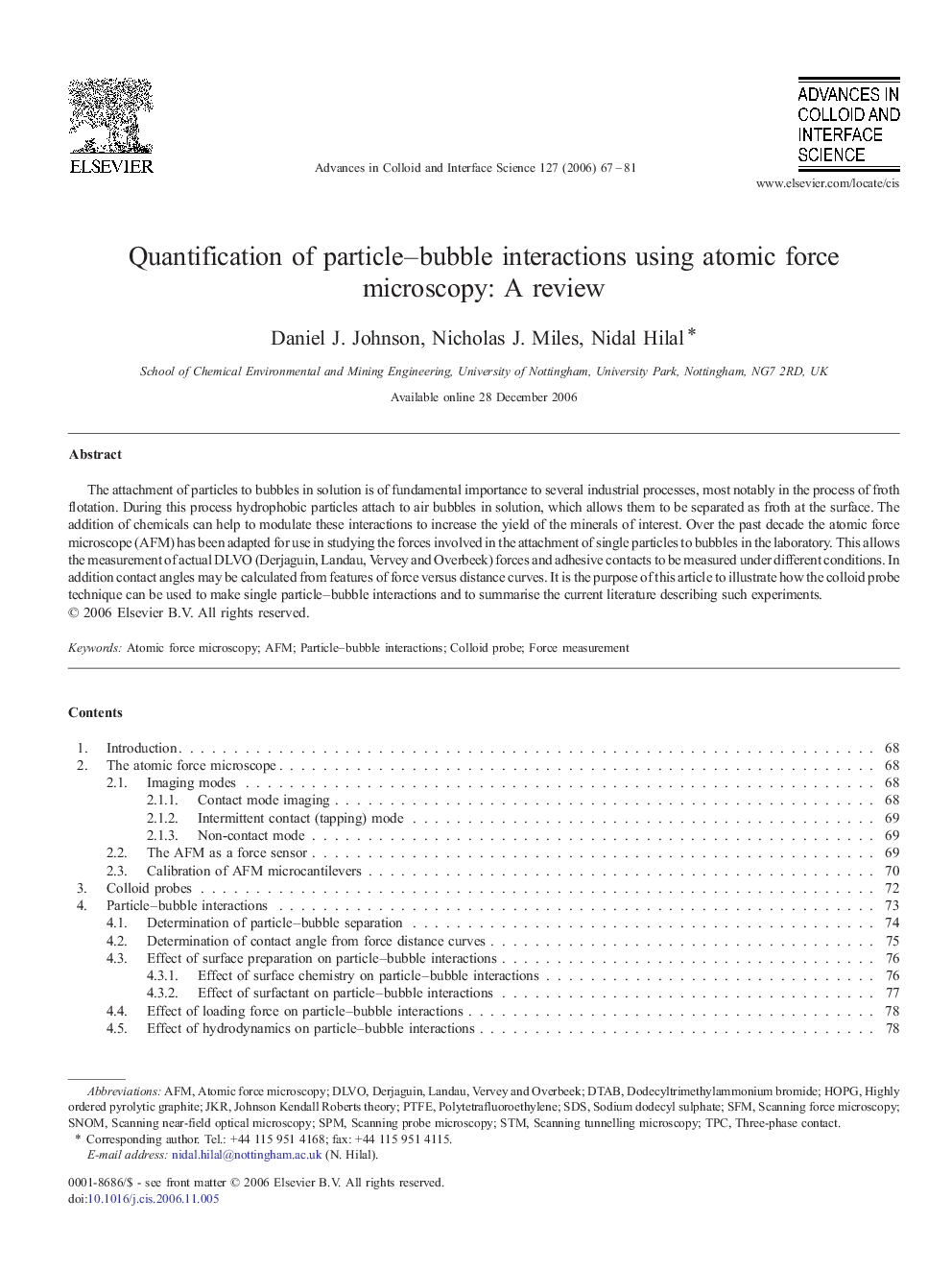| Article ID | Journal | Published Year | Pages | File Type |
|---|---|---|---|---|
| 591368 | Advances in Colloid and Interface Science | 2006 | 15 Pages |
The attachment of particles to bubbles in solution is of fundamental importance to several industrial processes, most notably in the process of froth flotation. During this process hydrophobic particles attach to air bubbles in solution, which allows them to be separated as froth at the surface. The addition of chemicals can help to modulate these interactions to increase the yield of the minerals of interest. Over the past decade the atomic force microscope (AFM) has been adapted for use in studying the forces involved in the attachment of single particles to bubbles in the laboratory. This allows the measurement of actual DLVO (Derjaguin, Landau, Vervey and Overbeek) forces and adhesive contacts to be measured under different conditions. In addition contact angles may be calculated from features of force versus distance curves. It is the purpose of this article to illustrate how the colloid probe technique can be used to make single particle–bubble interactions and to summarise the current literature describing such experiments.
